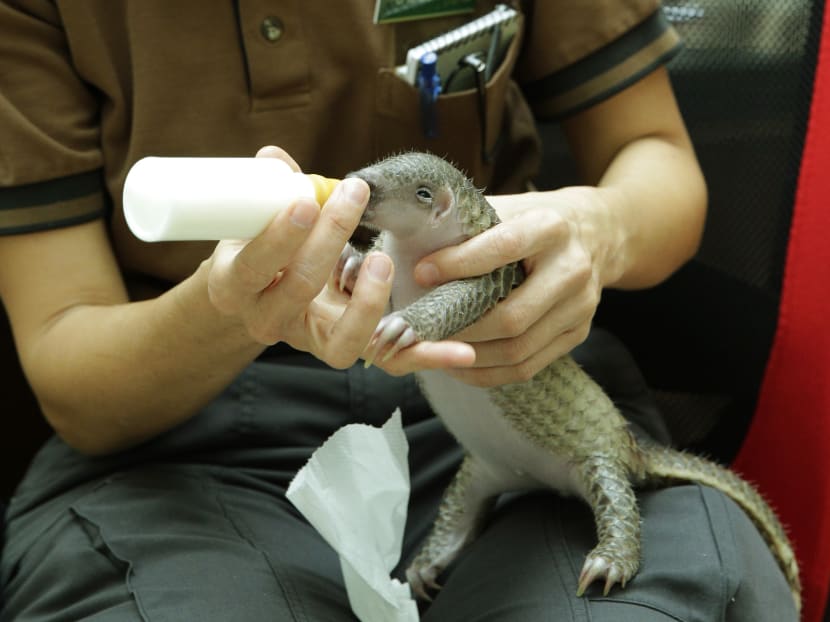Rescued baby pangolin set for return to the wild; national plan launched to protect critically endangered creatures
SINGAPORE – Weighing just above 500g, the tiny Sunda Pangolin was barely a few months old when it was found stranded and alone around the Upper Thomson area in January last year.
SINGAPORE – Weighing just above 500g, the tiny Sunda Pangolin was barely a few months old when it was found stranded and alone around the Upper Thomson area in January last year.
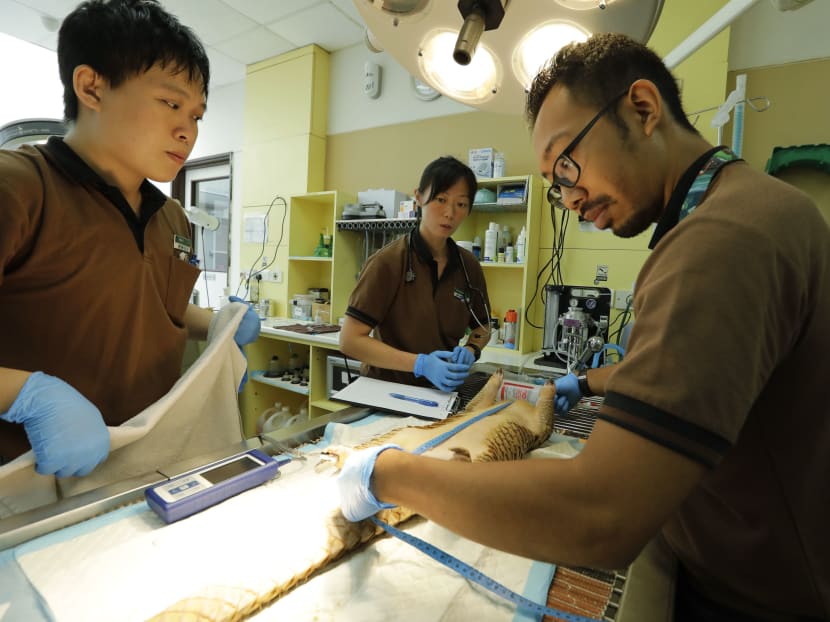
Today, Sandshrew the pangolin has grown to a robust 6.4kg, thanks to the staff at the Wildlife Reserves Singapore's (WRS) Wildlife Health and Research Centre.
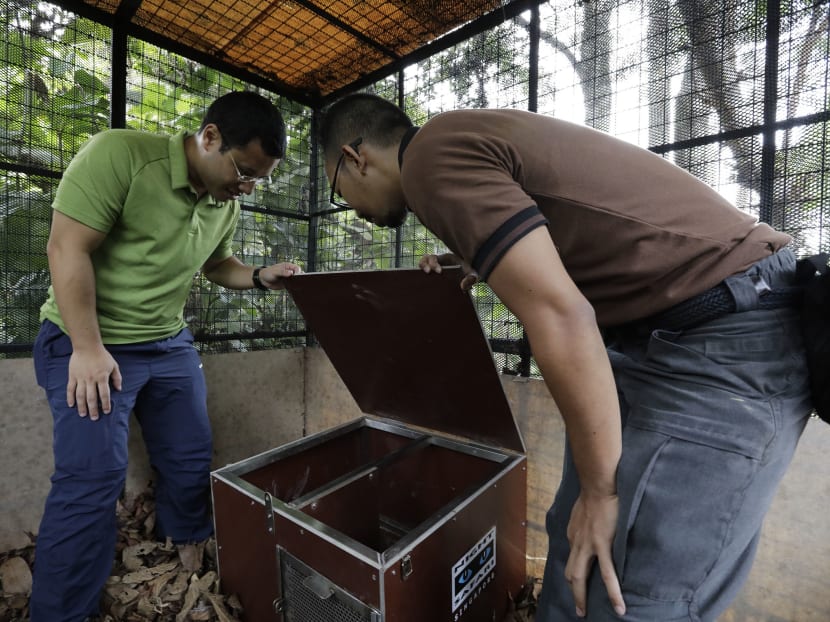
It embarked on its journey back into the wild on Tuesday (Sept 18) with a transfer to a soft-release enclosure. WRS staff will eventually leave the enclosure's gate open for it to leave voluntarily.
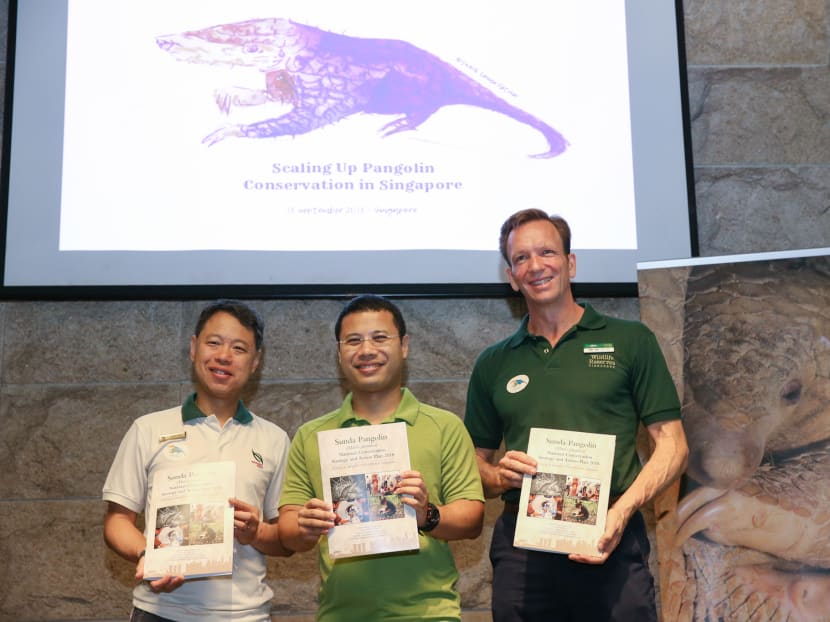
Sunda pangolins like Sandshrew – named after a Pokemon character – will receive better protection in future with the launch of the Sunda Pangolin National Conservation Strategy and Action Plan on Tuesday.
While the critically endangered species is believed to be breeding in the wild in Singapore, its numbers are not known.
The plan aims to gather information on its status and ensure its wild population in Singapore is viable through habitat protection and connectivity. It also aims to develop successful rescue, rehabilitation and release strategies.
By June next year, for instance, the Singapore Pangolin Working Group aims to consolidate data from camera traps to establish where the insect-eating scaly mammal can be found, and its estimated numbers in nature and military areas.
By August next year, it aims to complete an unbiased study on pangolin roadkill hotspots. Past research suggests roadkill is most likely the major threat to the pangolin in Singapore. In March this year for instance, a leopard cat, Sunda pangolin and sambar deer were found as roadkill in Mandai near works to build new attractions, leading nature enthusiasts to call for project developer Mandai Park Development to take more preventive measures.
By mid-2020, the group wants to establish a tracking protocol for pangolins using GPS tags, Very High Frequency and other techniques, among other targets.
A radio tracking device has been attached to one of Sandshrew's scales to allow staff and volunteers to track its movements.
Dr Sonja Luz, WRS' director of conservation, research and veterinary services, said the group also wants to develop protocols to ensure rescued pangolins are well cared for. These can be shared with other wildlife rescue groups in the region.
WRS currently has eight Sunda pangolins – one of eight species in the world – three of which were born in the Night Safari.
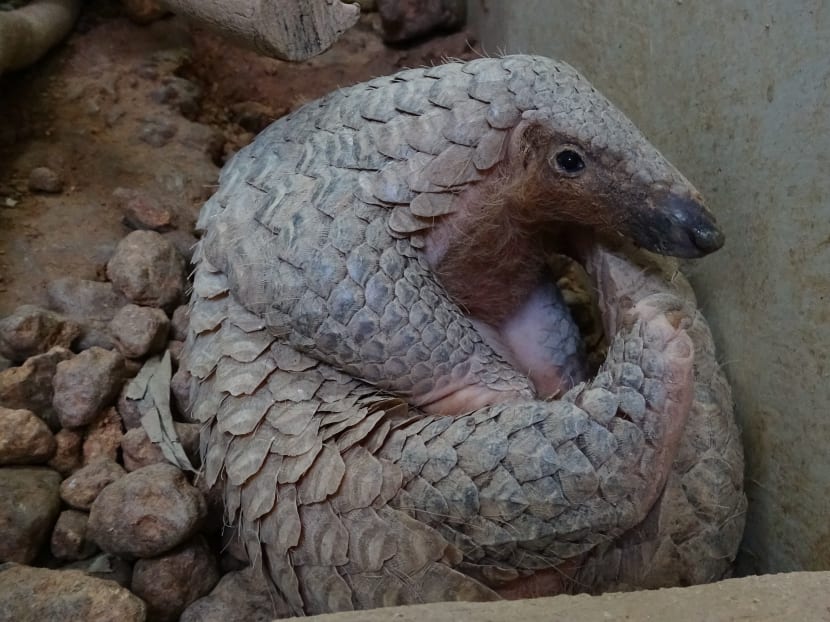
The slow-moving nocturnal animal, which curls up in a ball when it feels threatened, is considered to be the world's most trafficked mammal.
Dr Luz estimated that one million pangolins have been poached in the last decade, and said that 20 tonnes of pangolins and their parts are trafficked internationally every year. They are hunted and trafficked for their meat and scales.
While the threat of poaching is low here, it should be preempted, said conservationist N Sivasothi.
One of the immediate priorities, apart from information gathering, is road kill reduction, said Dr Adrian Loo, National Parks Board's group director of conservation.
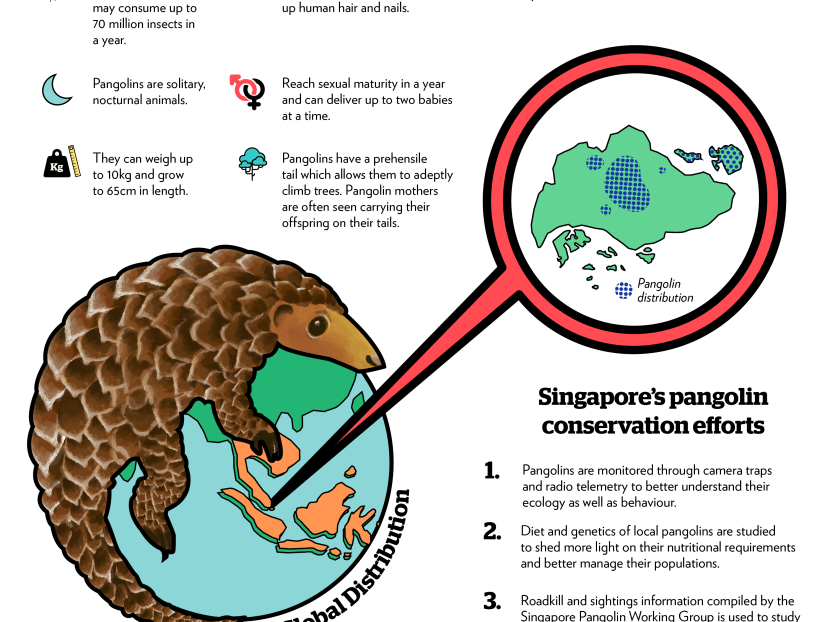
While it is unclear how many pangolins have been killed by traffic over the years, available data showed most incidents from 2004 to 2017 to be around the central part of the island.
"We are currently working with various stakeholders to better understand where the roadkills are, and to introduce traffic calming measures," said Dr Loo.
NParks recommends that developers near pangolin habitats construct hoardings and engage a consultant to help in animal shepherding, he said.
Culverts, or drains that run beneath the road surface, are the best bet for pangolins' safe passage and studies have shown that they do use it, Dr Loo said.
Habitat enhancement of buffer parks, such as Rifle Range Nature Park, will also go a long way in aiding the survival of the species.
The pangolin conservation plan was first mooted last year when 50 conservationists, including international experts gathered at the Singapore Zoo.
National strategies are also in place for species such as the Singapore freshwater crab and the Raffles banded langur.

